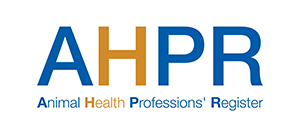Horses can exhibit musculoskeletal problems in a variety of different ways, from subtle decrease in performance, or stiffness on one rein - through to schooling difficulties or behavioural problems - and eventually unsoundness and breakdown of tissue.
PHYSIOTHERAPY FOR HORSES
Horses can exhibit musculoskeletal problems in a variety of different ways, from subtle decrease in performance, or stiffness on one rein - through to schooling difficulties or behavioural problems - and eventually unsoundness and breakdown of tissue.
Normal movement will be prevented if soft tissues are restricting, weak or painful. If untreated horses will use compensatory patterns of movement in order to continue to meet the demands made upon them. Over time, these compensatory movement patterns create further soft tissue adaptations, creating a viscous circle which will continue until eventually a structure breaks down.
Horses are predisposed to neck and back problems due to the very fact that we ride them. Other contributory factors include - working in an incorrect outline with back in extension, carrying an unbalanced rider, incorrectly fitted saddle, mouth pain, inadequate fitness, working when fatigued, foot imbalance, overstitching lumbo-sacro joint.
Aim of equine physio is to identify and treat the soft tissue problem and re-train new efficient movement patterns.
High performance horses work very close to breakdown threshold of their flexor tendons and suspensory ligaments when galloping, together with degeneration due to raging and poor regenerative properties, makes them susceptible to serious injury. Electrotherapy techniques such as ultrasound, laser and pulsed electromagnetic energy can be beneficial in treating both the initial inflammatory stage of injury and in the production of better quality repair.
Electrotherapy techniques are also beneficial in treating wounds sustained from direct injury, haematomas from kicks and collisions, and in reducing the subsequent scar tissue - particularly important for show horses and ponies.
It is advisable for all ridden horses in regular work, or competing at pony and riding club level, to be assessed two to four times a year. For those competing at a higher level, more regular input may be required. Pre and post major competitions checks will ensure that horses can perform at their optimum level and that any competition induced strains are resolved quickly.
COMMON SCHOOLING DIFFICULTIES AND INDICATIONS OF MUSCULOSKELETAL INJURIES
- Stiffness and resistance - especially showing an increased one sidedness.
- Difficulty getting an outline or engaging hindquarters
- Difficulty obtaining correct canter lead or disunited canter
- Shortened stride length
- Loss of performance
- Knocking show jumping poles - especially combination fences
- Unexplained resistance - bucking, rearing, napping and refusals
- Changes in behaviour or temperament






